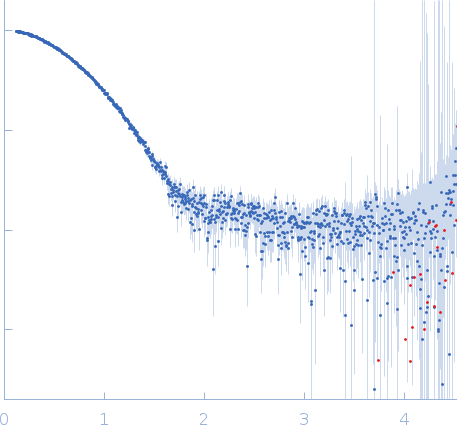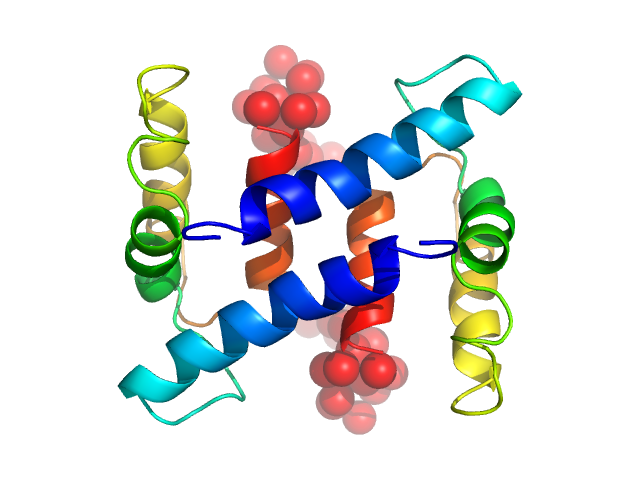| MWexperimental | 24 | kDa |
| MWexpected | 23 | kDa |
| VPorod | 48 | nm3 |
|
log I(s)
2.45×101
2.45×100
2.45×10-1
2.45×10-2
|
 s, nm-1
s, nm-1
|
|
|
|


|
|
Synchrotron SAXS data from solutions of Human Protein S100-A4 in 20 mM HEPES, 20 mM NaCl, 0.1 mM TCEP, pH 7.5 were collected on the BM29 beam line at the ESRF (Grenoble, France) using a Pilatus 1M detector at a wavelength of λ = 0.0931 nm (I(s) vs s, where s = 4πsinθ/λ, and 2θ is the scattering angle). at 10°C. 10 successive 1 second frames were collected. The data were normalized to the intensity of the transmitted beam and radially averaged; the scattering of the solvent-blank was subtracted.
Sample concentration: UNKNOWN. |
|
|||||||||||||||||||||||||||